
'Framing Klinko' in MAXIM Australia
Legendary photographer MARKUS KLINKO shares a gallery of his superbly iconic celebrity images and reveals the stories behind them, including his latest work starring actor Joe Manganiello…
Celebrity photographer Markus Klinko has been lensing some of the most enduring imagery across music, pop culture and fashion for over three decades. The Swiss-born snapper’s distinct style first entered the zeitgeist in the early 2000s after he was “forced” by record labels to ditch fashion magazines and start shooting album sleeves during the golden age of CDs. As one of the music industry’s go-to guys for instantly iconic album covers, Klinko is the genius behind the cover of Beyonce’s Dangerously In Love, Mariah Carey’s The Emancipation of Mimi and the Black Eyed Peas’ Elephunk, to name just a few.
Like many auteurs, Klinko has a remarkable ability to not only capture but define emerging icons, from a young Britney Spears to an ascendant Lady Gaga. Here, the photographer chats with MAXIM from his home in California to revisit some of his most incredible images and reveal the next musician set to get a Klinko makeover.
Markus, your work was so influential in defining the aesthetics of 2000s music. What is it about your photography style that resonated with the music of that era?
It’s a great question and I think it’s not a singular answer. I came from a music background, I had a successful, although short, career as a concert harpist and recording artist. In 1994 I had a very strange issue with my hand that forced me to quit my career and I taught myself photography. I feel in terms of colours and textures and all that, the brain probably has a lot of parallels between sound and visual, and since I had no formal training in photography it’s something I pulled from the musical background. I think that’s one of the reasons why eventually my career shifted into becoming an in-demand music photographer.
So, you didn’t start out in the industry wanting to shoot musicians?
Not at all. When I first started, I had zero interest in shooting celebrities, I just wanted to shoot models – MAXIM, Playboy… beautiful female forms. But it was the music industry who came to get me and almost forced me to accept some album cover assignments.
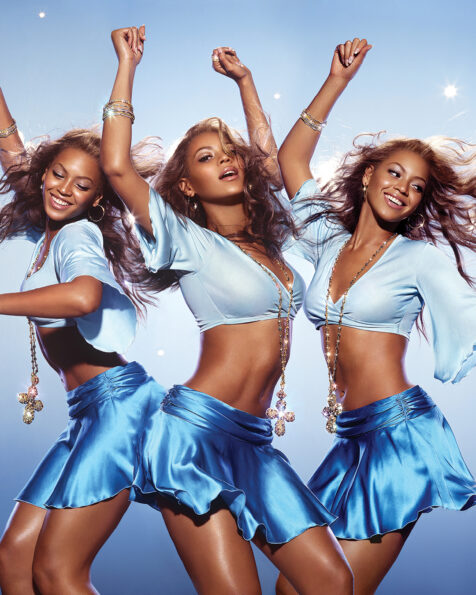
“In 2003, Beyonce asked me to shoot the cover of her debut solo album, Dangerously In Love. She mentioned a campaign I’d done showing Laetitia Casta lying on a diamond-studded spider’s web. Beyonce wanted something similar, but smaller. When they arrived for the shoot – and again her mother was styling her – I pointed at the diamond top as they brought out all the outfits and said, ‘That’s exactly what we discussed’.
“But Beyonce was reluctant because her mother had only brought skirts to pair it with, and she felt it would make the look too red carpet. I suggested she pair it with jeans. She liked the idea but they hadn’t brought any. So, I gave her mine – on that famous, iconic cover, she is wearing my jeans! People ask if that meant I wasn’t wearing any trousers while shooting her, but I was – I had another pair, luckily. A few months later, she returned the jeans. She’d had them cleaned and they were nicely wrapped with a ribbon.
“In 2003, Beyonce was not the Beyonce she is now. She was still a young girl from a group. While she was well-known, she wasn’t the biggest pop star in the world. She was friendly and professional on set. She is a hard worker and an intuitive and intelligent model. She knows what to do. The pose on the cover just happened – it was not me directing her. She just snapped into it and I knew immediately that this was the shot.
“The final image was totally the vision I had for her – this sexy, glossy look that I felt represented her best. I didn’t want to do anything low-key or lo-fi with daylight, but that top did not look exactly how it does on the cover – there was a lot of post-production and manipulation. It was much more flimsy than it appears and it wasn’t staying strategically in place – she’s not wearing anything other than those strings of diamonds, so she was pretty much topless on set. Later, in post-production, everything was perfected and arranged to make sure nothing shows.”
Did you know at the time that your album cover shoots were defining the look for a whole era?
I didn’t particularly try. Obviously, there was a very distinct look to the 2000s, but my work was associated with digital post-production, so very early on I got into experimenting with post-production way before photoshop was even a thing.
I was creating things in the ’90s that you look at now and people say, “Oh is that AI?” and it’s work that’s almost 30 years old. It’s purely my way of lighting, posing and post-production. A lot of people copy that now.
Is it flattering to see your influence on other photographers?
I mean it’s flattering but it’s also annoying – the young generation forgets things very quickly. People now know the latest Instagram photographer. I know that some people realise I’ve been doing this stuff 25, 30 years ago and I’ve developed in a way where my work has not shifted completely but expanded. I don’t know if you saw my Ice Spice cover for Paper magazine…
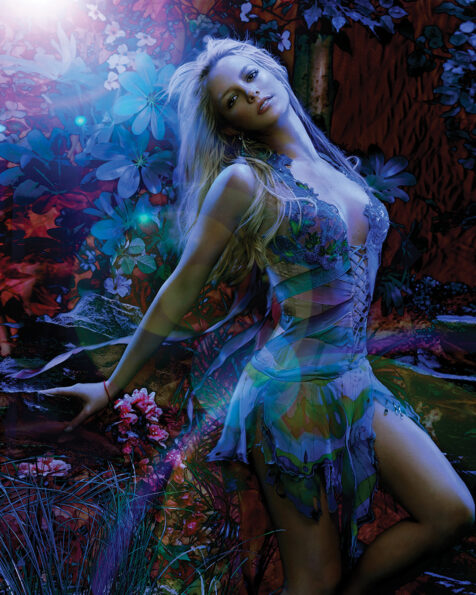
“This image captures Britney’s confidence, attitude and energy. She was super smart and it was one of the best experiences of my career. Our collaboration on the tour campaign, which was also used by beauty powerhouse Elizabeth Arden to advertise Britney’s fragrances – Fantasy and Midnight Fantasy – led Britney to become the highest-grossing merchandise female artist!”
We did! It was sensational.
Thanks! That, to me, looks like a shoot I could have done in 2002 with 3LW or Kelis or any of those early 2000s acts, and luckily for me a lot of them are now some of the biggest artists in the world.
When you’re working with younger artists, do you see a similarity with say Ice Spice and a young Beyonce?
I do see that absolutely. It’s obviously right now a trend – these new artists are looking to evoke the 2000s and there’s enormous nostalgia for a recent past when things were kind of better and kind of nice. Waking up in the morning sometimes I think, “Oh I wish it was 2000 now”, but I’m also so excited about the new technology. The new shoot with Joe Manganiello and the robotic wolves, that’s a departure.
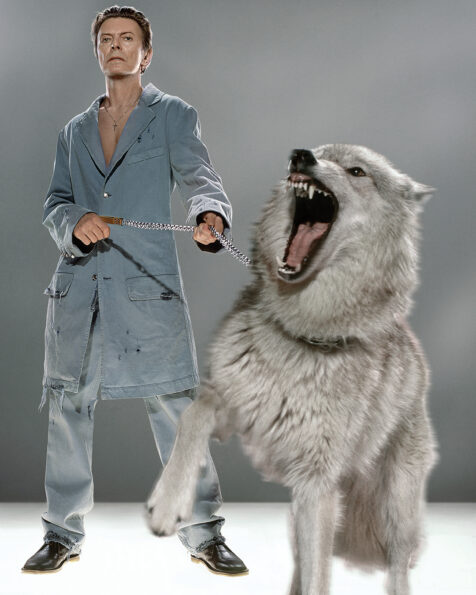
And the Manganiello shoot took inspiration from your earlier work with David Bowie. What was it like shooting Bowie? He was thin and petite, right?
He wasn’t petite but he was thin and sort of short, maybe 5’ 11”. He was male model size. Bowie was just very elegant and incredibly fashionable and photogenic. Smartest person you could imagine and such a well-researched man and very kind. And I worked with his wife, Iman, dozens of times too.
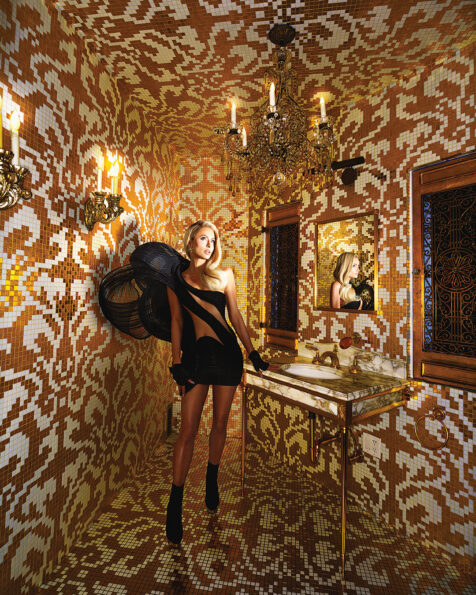
“She said that I had seen a photo of her from the future, imagining what ‘she was going to become’. We took these photos at the former Greta Garbo estate in Beverly Hills and this series is called ‘Paris in Wonderland’ as it has a strong, surreal vibe, a couture fashion fantasy with an old Hollywood feel. This property reminds me of Tim Burton’s Edward Scissorhands and Alfred Hitchcock., where we feel that something magical, surreal or disturbing could happen.”
Is it different working with a supermodel like Iman versus a musician like Bowie?
Many times it’s similar, because talented superstar musicians like Beyonce, Britney, Bowie, they have an innate ability to present themselves. I tell people exactly what I want, and people don’t get upset because they know I’m not there to criticise. I’m there to make the photo.
What kind of subjects do you look for to shoot with now?
At this stage of my career I’m seeking to work with icons.
Whether they’re already icons or going to be icons. I just worked again with Paris Hilton, I worked with her in 2000 and again a few months ago.
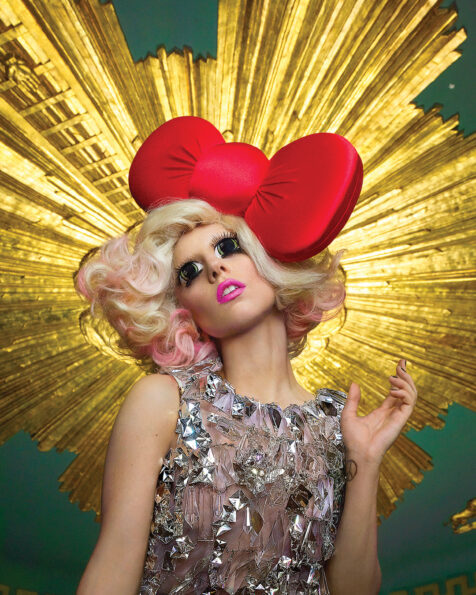
Speaking of icons, your work is in demand in galleries all over the world. What satisfaction does that give you as a creative?
I’m so proud my photographs can live in art galleries next to Warhols, Picasso, Lichtenstein. In my head I’m an assignment photographer, I created my entire body of work by commissions for album covers and magazines like MAXIM, GQ, Playboy.
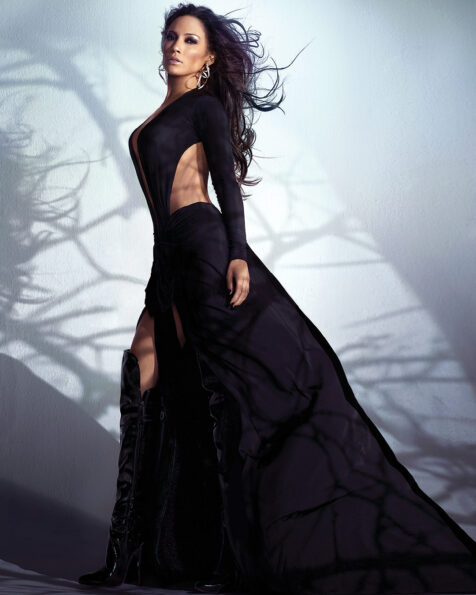
These days photography is more ephemeral. Has this changed the work for you and the satisfaction it gives you?
Yes, it has. I would say that if I didn’t have the gallery option where I can exhibit my work in six feet, seven feet in frames like paintings, I would be very frustrated. Our media culture is now oriented on the tiny phone screens – sure, music fans still talk about album covers and there’s a bit of Twitter action, but it’s not the same.
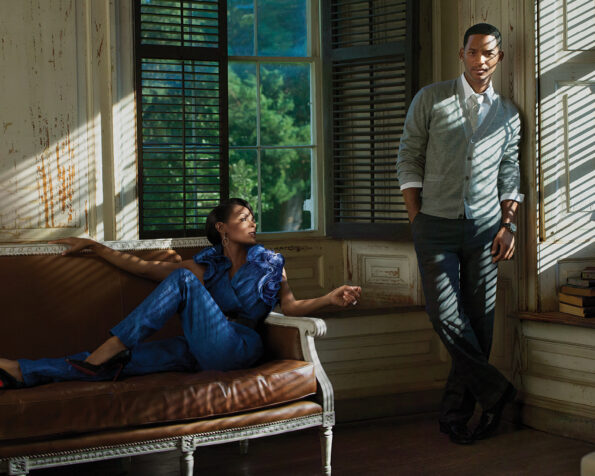
So true. Are you currently working on any new album covers?
Next week I’m going to shoot Doechii’s new album cover. I love her, she’s cool. I’m literally planning this as an art gallery production – she’ll use it as an album cover, of course, but I’m imagining people in a gallery walking up to it next to Beyonce, next to Bowie and saying, “This is the new hip hop goddess of our time”.
See more of Kinko's work - including portraits of Bowie and other icons - showcased on the ArtSolutions gallery
Thank you to Reilly Sullivan and MAXIM Australia for the Original Feature
